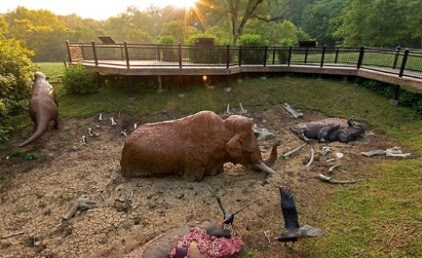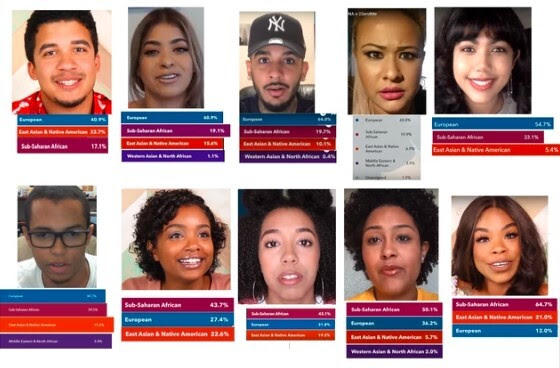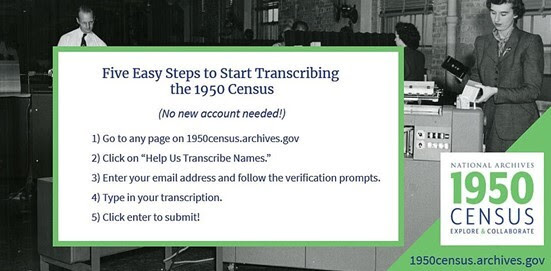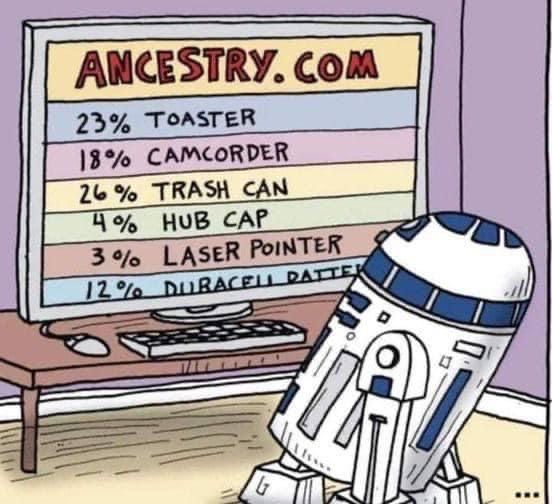
05 May Ancestors – The Joy in Discovering New Ancestors – May 7, 2022
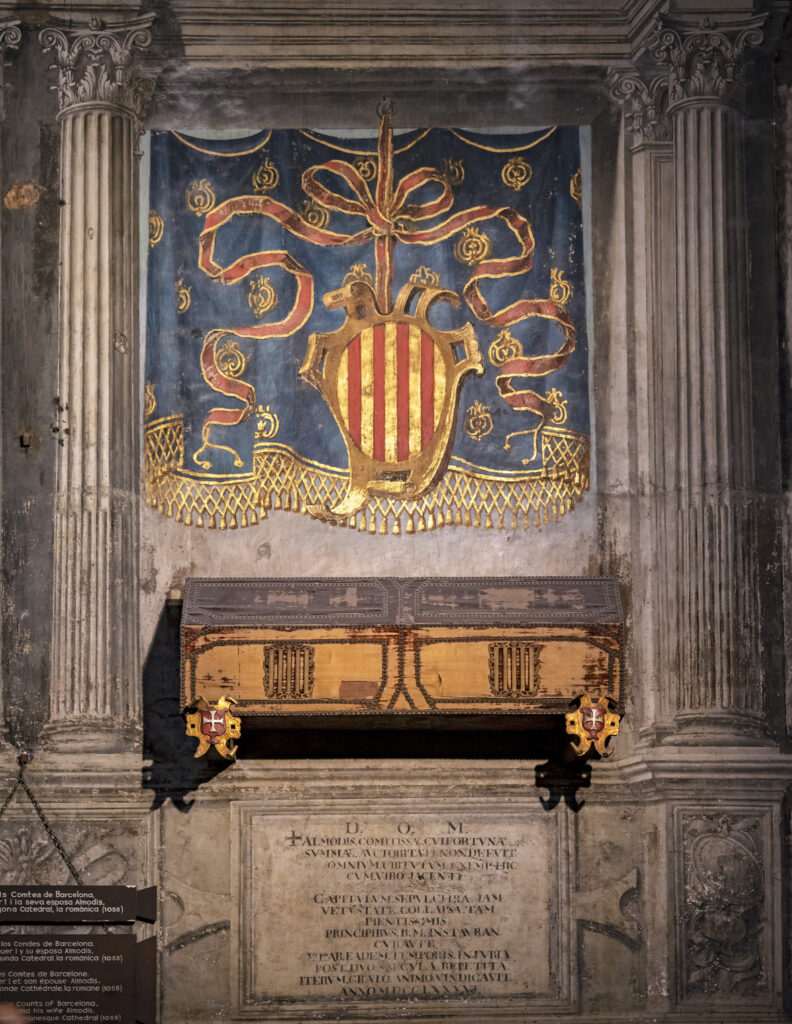
Contents
- 1 IT’S NOT EASY TO BE HUGH!
- 2
- 3 THOMAS JEFFERSON BELIEVED THAT SOME OF THE LARGE ANIMALS MIGHT STILL BE LIVING IN THE WEST… DANIEL BOONE WAS GROWING SUSPICIOUS OF THE INDIAN TRAIL…
- 4
- 5 ANCESTRY AND DNA STUDIES THAT CAN TARGET A DISTINCT ETHNICITY
- 6
- 7 **MY ANCESTORS CAME FROM ASTEROIDS?
- 8
- 9 YOUR ANCESTORS WANT YOU TO FIND THEM IN THE 1950 CENSUS
IT’S NOT EASY TO BE HUGH!
While searching for ancestors, I discovered that HUGH V of Lusignan my 33rd Great Grandfather married Almodis (her tomb at right) who was born about 1020 and was famous for her marriage career. They married about 1038 and they divorced due to consanguinity (meaning that they were close cousins of some sort).
She later, with HUGH V’s assistance, married Count Pons of Toulouse in 1040. Almodis was still Pons’ wife in April 1053, when she was abducted by Count Ramon Berenguer I of Barcelona.
Ramon kidnapped her from Narbonne with the aid of a fleet sent north by his ally, the Muslim emir of Tortosa. They married immediately (despite the fact both of her previous husbands were still alive) and they appear with their twin sons in a charter the next year. Pope Victor II excommunicated Almodis and Ramon for this illegal marriage until 1056.
My ancestor the desirable Almodis maintained contact with her former husbands and many children, and in 1066/1067 she traveled to Toulouse for her daughter’s wedding.
A few years before, in 1060, HUGH V of Lusignan had revolted against his lord, Duke William VIII of Aquitaine, in support of Almodis’ son William IV of Toulouse. Her sons supported one another in military campaigns; HUGH VI of Lusignan, Raymond IV of Toulouse, and Berenguer Ramon II of Barcelona all took the Cross.
Her third husband Ramon was married to her niece, Isabela Trencavel, the daughter of Rangearde de la Marche. Their son, Peter Raymundi, was Ramon’s original heir. Peter Raymundi resented Almodis’ influence and was concerned she was trying to replace him with her own two sons, his consanguineous nephews, both who had claims through their father, Count La Marche.
Peter murdered her in October 1071. William of Malmesbury reflected that she was, “sad, [of] unbridled lewdness”.
Pere-Ramon was disinherited and exiled for his crime and fled the country. When his father died in 1076, Barcelona was split between Almodis’ sons, Berenguer Ramon and Ramon Berenguer. The family history of murder did not end with Pere-Ramon, as Berenguer Ramon earned his nickname “The Fratricide” when he killed his own twin brother.
More of my ancestors- Hugh and Almodis’ descendants:
HUGH VI (c. 1039/1043 – 1102), called the Devilish. He undertook an expedition to Spain in 1087 along with another half-brother, Raymond IV of Toulouse, to assist the count of Barcelona.
HUGH VI took the cross for the First Crusade, along with his brothers Raymond and Berenguer. He participated in the Crusade of 1101 and was killed at the battle of Ramla in 1102.
HUGH VII the Brown of Lusignan (1065–1151), He was one of the many notable Crusaders in the Lusignan family. In 1147 he took the Cross and followed King Louis VII of France on the Second Crusade.
HUGH VIII the Old in 1163, went on a crusade to the Holy Land, was captured at the battle of Harim, and died in captivity.
HUGH IX de Lusignan was betrothed to marry 12-year-old Isabel of Angouleme in 1200, when King John of England married her instead, an action which resulted in the entire de Lusignan family rebelling against the English king.
Following King John’s death, Queen Isabella returned to her native France, where she married the son of her earlier betrothed, HUGH X de Lusignan on 10 May 1220.
HUGH XI was betrothed in 1224 to Joan of Toulouse, the daughter, and heiress of Raymond VII, Count of Toulouse, and his wife Sancha de Aragón. The betrothal was later broken, and Joan was married to Alphonse, Count of Poitiers, brother of King Louis IX of France.
By the Treaty of Vendome in March 1227, HUGH XI was next betrothed to Isabelle of France, the daughter of Louis VIII of France and Blanche of Castile. However, Isabelle would later break off their marriage plans.
In 1249 he agreed to serve the count of Poitiers for a year on the Seventh Crusade. HUGH XI was killed on 6 April 1250 during the Battle of Fariskur, which was the last major battle of the Seventh Crusade. He was on crusade with Louis IX of France.
HUGH XII de Lusignan died in 1270 while on Crusade with King Louis IX of France in an early battle of the Eighth Crusade.
THOMAS JEFFERSON BELIEVED THAT SOME OF THE LARGE ANIMALS MIGHT STILL BE LIVING IN THE WEST… DANIEL BOONE WAS GROWING SUSPICIOUS OF THE INDIAN TRAIL…
** Since the days of our pioneer ancestors, Kentuckians have been in awe of the large animal bones discovered in Big Bone Lick State Park in Union, Kentucky.
The belief is that during the last great Ice Age enormous herds of herbivorous animals existed in the vicinity. According to park experts, the mammoth and the mastodon were among the animals to visit the Lick.
Ancestors of the sloth, bison, and horse later came to the salty soil and vegetation around springs. From the excavations there, animals became mired in the bogs and died in the wet, marshy land.
The Delaware and Shawnee Indians were quite familiar with the bones of the animals in the Ohio Valley and collected the salt. Later, the Europeans learned of Big Bone Lick from the Indians.
The first remembered European to visit this site was a French Canadian, de Longueil, in 1739. In fact, a Louisiana map dated 1744; marks the lick as the place where they found the elephant bones in 1739.
In 1744, an American Indian trader by the name of Robert Smith removed some of the fossil bones. And, the first map of Kentucky, prepared by John Filson in 1784, bore on the legend: “Big Bone Lick; Salt and Medical Spring. Large bones are found there.”
Later on in 1803, when Meriwether Lewis traveled to Big Bone Lick heading west to join William Clark and the men assembling in Louisville for the Corps of Discovery, he sent a box of specimens to President Jefferson, along with an extremely detailed letter describing the finds of Goforth.
President Jefferson devoted much time to the study of Big Bone Lick and believed that some of the large animals might still be living in the western regions of the country.
In 1807, the president sent Clark to Big Bone Lick for the first organized vertebra paleontology expedition in the United States. During the three weeks that Clark was there, he hired laborers to collect bones and shipped three huge boxes to the President. Jefferson maintained a room in the White House for the display of the Big Bone collection.
I had ancestors fight in The Battle of Blue Licks which was one of the last Revolutionary War battles in Kentucky. The battle occurred on August 19, 1782, ten months after the famous surrender of Lord Cornwallis in Yorktown, which had effectively ended the war in the East.
About fifty American and Canadian Loyalists along with three American Indians ambushed and routed 182 Kentucky militiamen on a hill next to the Licking River (then Kentucky County, now Robertson County Virginia).
The rebels had reached a spot on the lower river near a spring and salt lick in the morning. They were spotted by some Indian Scouts watching from across the river. Behind the scouts was a hill around which the river looped. Todd called a council and asked Daniel Boone, the most experienced woodsman, what he thought.
Boone said he had been growing increasingly suspicious because of the conspicuous trail left by the Indians; he suspected that the Indians were trying to lead them into an ambush. But a fierce Indian fighter by the name of Hugh McGary, urged an immediate attack.
When no one listened, he mounted his horse and rode across the ford, calling out, “Them that ain’t cowards, follow me.” The men and officers followed McGary into the trap while Boone remarked, “We are all slaughtered men,” and crossed the river.
When the rebels reached the summit, the Indians opened fire at close range with devastating accuracy. After only five minutes, the center and right of the rebel line fell back. Only the force of Boone managed to push forward, while Todd and Trigg, easy targets on horseback, were shot dead.
The rebels ran down the hill, fighting hand-to-hand. Boone ordered his men to retreat and grabbing a riderless horse ordered his 23-year-old son, Israel Boone, to mount it. Then, while he searched for a horse for himself, Israel suddenly fell to the ground. He was shot through the neck. Boone realized his son was dead, mounted the horse, and joined in the retreat.
ANCESTRY AND DNA STUDIES THAT CAN TARGET A DISTINCT ETHNICITY
** DNA research can lead to precision medicine based on factors in a patient’s DNA that can affect the individual’s response to certain medical treatments.
The researchers said the lack of genome-wide studies of Hispanic/Latino populations, “factors ranging from research abuse and community mistrust, community superstition and apathy have led to a situation where these populations are particularly vulnerable to falling behind in receiving the benefits of the precision medicine revolution.
Hence, this study was the largest genetic study of Hispanics/Latinos in the U.S. — the Hispanic Community Health Study. Researchers sought to understand how “patterns of genetic variation…have changed over the last century and evaluate the impact such changes may be having on complex traits.”
One of the traits that had the strongest effect was height. Populations have grown taller over time, but people with Hispanic/Latino ancestry often have shorter stature than other subgroups of Americans. Those with a higher percentage of DNA from Amerindigenous background tended to be shorter than those with more African or European ancestry.
The close study of Hispanic and Latino populations had the goal of providing a large enough sample of DNA for medical researchers to further develop precision medicine that’s already available to many people of chiefly European descent.
For Latino people who want to explore their genetic heritage, there is now a mail-in saliva test designed to provide deep results to people with heritage in Indigenous Nations in the Latin American continent.
Read the full article below:
https://theevillegood.bulletin.com/dna-solves-family-mysteries-or-leads-to-more-questions/
**MY ANCESTORS CAME FROM ASTEROIDS?
Could the blueprint for life have been generated in asteroids? by Anil Oza, NASA’s Goddard Space Flight Center
Using new analyses, scientists have just found the last two of the five informational units of DNA and RNA that had yet to be discovered in samples from meteorites. While it is unlikely that DNA could be formed in a meteorite, this discovery demonstrates that these genetic parts are available for delivery and could have contributed to the development of the instructional molecules on early Earth.
The discovery, by an international team with NASA researchers, gives more evidence that chemical reactions in asteroids can make some of life’s ingredients, which could have been delivered to ancient Earth by meteorite impacts or perhaps the in fall of dust.
All DNA and RNA, which contains the instructions to build and operate every living being on Earth, contains five informational components, called nucleobases. Until now, scientists scouring extraterrestrial samples had only found three of the five.
However, a recent analysis by a team of scientists led by Associate Professor Yasuhiro Oba of Hokkaido University, Hokkaido, Japan, identified the final two nucleobases that have eluded scientists.
Nucleobases belong to classes of organic molecules called purines and pyrimidines, which have a wide variety. However, it remains a mystery why more types haven’t been discovered in meteorites so far.
“I wonder why purines and pyrimidines are exceptional in that they do not show structural diversity in carbonaceous meteorites unlike other classes of organic compounds such as amino acids and hydrocarbons,” said Oba, lead author of a paper about the research published April 26 in Nature Communications.
“Since purines and pyrimidines can be synthesized in extraterrestrial environments, as has been demonstrated by our own study, one would expect to find a wide diversity of these organic molecules in meteorites.”
“We now have evidence that the complete set of nucleobases used in life today could have been available on Earth when life emerged,” said Danny Glavin, a co-author of the paper at NASA’s Goddard Space Flight Center in Greenbelt, Maryland.
This newly discovered pair of nucleobases, cytosine and thymine, have been elusive in previous analyses likely because of their more delicate structure, which may have degraded when scientists previously extracted samples.
In the earlier experiments, scientists created something of a “meteorite tea,” placing grains of meteorite in a hot bath to let the molecules on the sample extract into the solution and then analyzed the molecular makeup of the extraterrestrial broth.
“We study these water extracts since they contain the good stuff, ancient organic molecules that could have been key building blocks for the origin of life on Earth,” said Glavin.
Because of how delicate these two nucleobases are, the team was initially skeptical to see them in the samples.
But two factors may have contributed to the new discovery: first, the team used cool water to extract the compounds instead of hot formic acid—which is very reactive and could have destroyed these fragile molecules in previous samples. Second, more sensitive analytics were employed that could pick up on smaller amounts of these molecules.
“This group has managed a technique that is more like cold brew than hot tea and is able to pull out more delicate compounds,” said Jason Dworkin, a co-author of the paper at NASA Goddard. “I was amazed that they had seen cytosine, which is very fragile.”
The finding doesn’t provide a smoking gun as to whether life on Earth got an assist from space or came about exclusively in the prebiotic soup in the planet’s infancy.
But completing the set of nucleobases that make up life today, in addition to other molecules found in the sample, gives scientists who are trying to understand the beginning of life more compounds to experiment with within the lab.
“This is adding more and more pieces; meteorites have been found to have sugars and bases now,” Dworkin said. “It’s exciting to see progress in the making of the fundamental molecules of biology from space.”
Not only did this analysis add to the kit for those modeling the inception of life on Earth, but it also provides a proof of concept for a more effective technique to extract information from asteroids in the future, especially from the samples of Bennu making their way to Earth in the next year via NASA’s OSIRIS-REx mission.
YOUR ANCESTORS WANT YOU TO FIND THEM IN THE 1950 CENSUS
The National Archives launched the 1950 Census website on April 1, 2022. You don’t have to be into genealogy to search the 1950 Census and learn more about your family history and life in the United States in 1950. This is where we need your help!
We encourage you to try out the 1950 Census website’s built-in transcription tool to help refine the name index.
https://1950census.archives.gov/?utm_campaign=transcribe1950census-april2022&utm_medium=email&utm_source=newsletter


